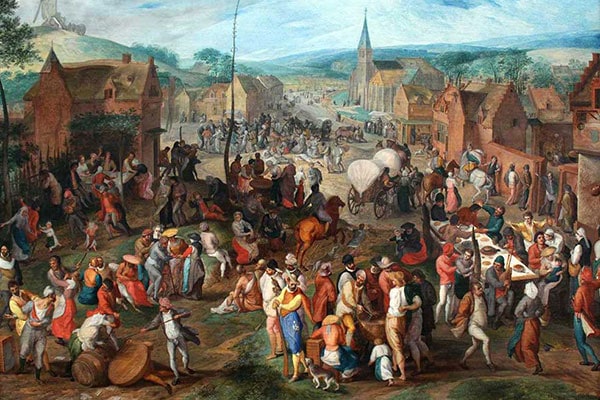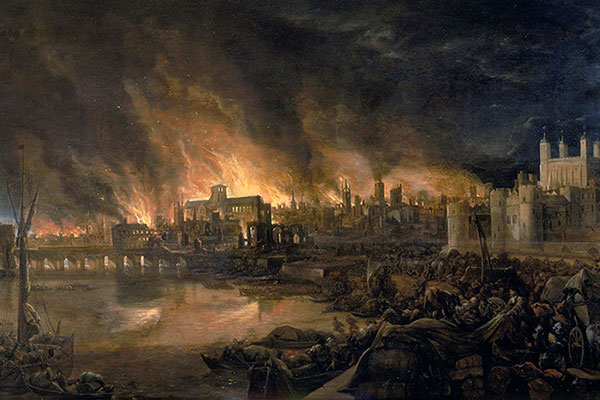Did you know that insurance dates back as far as 4000 BC? Since then, this system of negating risk has helped stimulate economies after a major downturn. But do you know its long history?
It has taken a few thousand years to formulate the policies we know today. Read on as we discuss the fascinating history of insurance.
First Instances of Insurance
The earliest known insurance policy originated in ancient Babylonia. It was found inscribed on a monument that had a set of laws decreed by King Hammurabi.
As well as being one of the earliest human rights declarations, these inscriptions also had codes relating to risk management. They included primitive building laws, and an early code about risk management when lending money. This was an additional fee that cancelled the loan should the borrower's shipment sink or get stolen, namely, insurance.
This trend of insurance in the nautical world continued into the days of the Roman empire. This large, cross-continent civilization needed shipping to keep itself moving and essentially, in power. However, it was perilous, with rife piracy and early ships being prone to bad weather and shipwrecks.
It was here that more of the concept we would come to know as insurance formulated. For example, the law of general average came into play which stated that if the cargo were thrown overseas in a storm to lighten the ship, all investors would bear the cost, not just the individual who lost goods. Other concepts included bottomry, which used the ship itself as collateral.
Insurance During the Middle Ages
Standalone insurance policies date back to 14th century Genoa. The first documented policy was created in 1347. Standalone policies would then be introduced into maritime trade that included premiums based on specific risk factors, as we get today.
As trade began to prosper in the middle ages, insurance became more of an alluring prospect. At this time, many people were part of a guild. This was a trade organization of sorts, that trained people in a craft.
When these apprentices became their own entity, they would pay funds to the guilds that had trained them. That meant guilds had a large bank of money that they would use as insurance.
For example, if a guild member was unable to work or got passed away, the money would help their family survive, like a life insurance policy. If someone was robbed, the guild would cover the loss.
The insurance industry would gain even more importance with the expansion to the new world. Exotic, expensive goods were able to be imported back into Europe from the Americas, Asia, and Africa. However, these journeys involved a lot more risk, so losses became even higher.
At this time, the first experiments in venture capitalism also began. Companies would seek investors, pairing them with colonists who wanted to start a life in the new world. In return, they would get a profit from the goods the colonists produced for export.
The ship's cargo list would be read over, and anyone who wanted to invest in the risk would sign. This was one of the earliest forms of underwriting.
Great Fires of London and Insurance
The Great Fire of London could arguably be the first concrete conception of our modern insurance policies. At this time, London was built of wooden shanties that cramped on top of one another. A fire that started in Pudding Lane quickly spread, destroying over 13,000 homes and many other establishments.
In response, many marine underwriters switched to insure buildings. A man named Nicolas Barbon was the first to have the ingenious idea of starting fire insurance after the event. With his building insurance business, he drafted the first fire insurance policy.
In the 19th century, these policies would grow to cover more occurrences. This would make them the accident policies we know today.
Insurance in the Current Age
Early insurance in the Americas was risky. With so much uncertainty and danger, companies were reluctant to lend their money to causes. It would not be until 1732 when the first real insurance company opened in South Carolina, offering insurance for fires.
Insurance in Canada has had a strong history in the modern age, both in public and private hands. As early as the 1870s depression, unemployment policies were introduced. These became even more crucial after the great war and depression of subsequent years.
These insurance booms after uncertain economic periods continue even today. In fact, there are many ways in which insurance boosts the national economy. Firstly, they provide safety and security to individuals and businesses, making investment and growth less of a risk in uncertain times.
Insurance also stimulates long-term growth. As their money is invested in long-term infrastructure projects, the countries economy benefits from the profit it makes over a long period of time.
Finally, it spreads economic risk. The risk passes from the insured to the insurers, who then spread it out even further. This minimizes the damage any subsequent economic downturns may have.
Pay Attention to the History of Insurance
In summary, the history of insurance has followed a pattern. After great historical events and downturns, insurance has evolved and helped stimulate the economy. After the events of the COVID pandemic, could we be entering a new world of insurance frontiers?
If you are looking for Canadian insurance providers, then Insurdinary should be your first stop. At Insurdinary, we can compare everything from home to health insurance, to get the best deal for you. Get the quote here and safeguard your assets, starting today.





